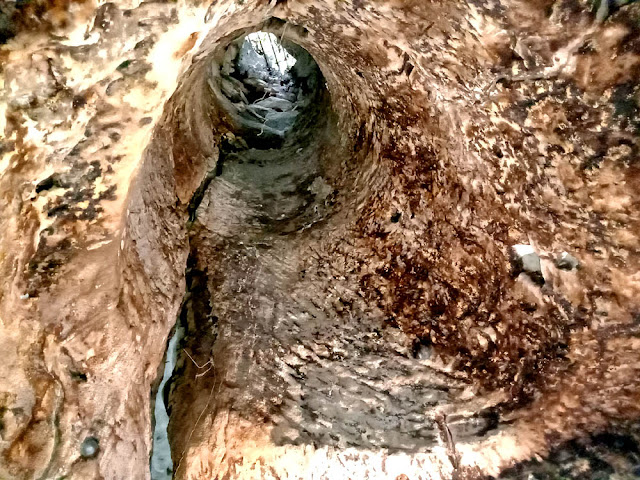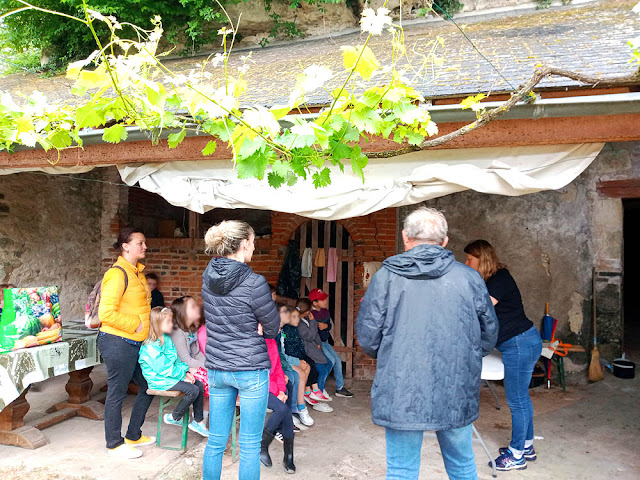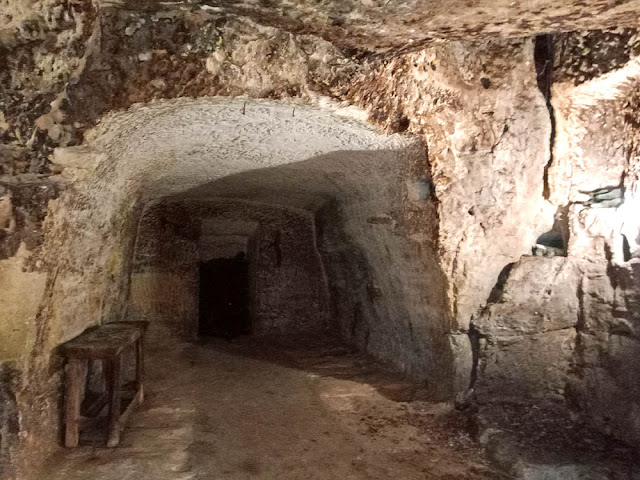 |
This space was used for bottling wine, and behind it, storing it. Now it is used as a party space by the owner's son.
|
My friend Christian owns a string of buildings in Les Villages de Vaux, on the outskirts of Sainte Maure de Touraine. All of them are troglodytic, and the most interesting of them was once a wine making cave.
 |
The soupirail functioned as a chute to drop grapes through from the vineyard above down to the press underground, and as a vent for fresh air and light into the cave. It has a grill at the top so animals don't fall down it.
|
The cave exists because there was a natural cavity which might have provided a bit of shelter to animals, and was then expanded by man into a useable underground space. The limestone extracted in the process was used to build houses.
 |
Above is the winemakers temporary accommodation for while they were working, underneath the balcony, space for a horse, with a feed trough at one end.
|
The cave as it exists today is in three parts. The first is some storage and an open shelter with a slate roof. In the middle is a roomy underground space where grapes were pressed for wine, plums were dried for prunes and the wine could be left to ferment in barrels. There is a cylindrical chute or vent cut out of the rock that goes from the ceiling of the cave up to the surface called a puits or a soupirail. Grapes were grown on the limestone ridge above the cave and when harvested dropped down through the chute into a receptacle ready to be crushed. The third section of the cave, on the right, has living quarters for the vine workers upstairs, a room for bottling and labelling downstairs, with a cellar for storing bottled wine behind. Under the living quarters balcony, in front of the work space, is a shelter with a feed trough for a horse.
 |
The slate roofed shelter in front of the troglodyte caves.
|
 |
The main troglodyte cave.
|






No comments:
Post a Comment